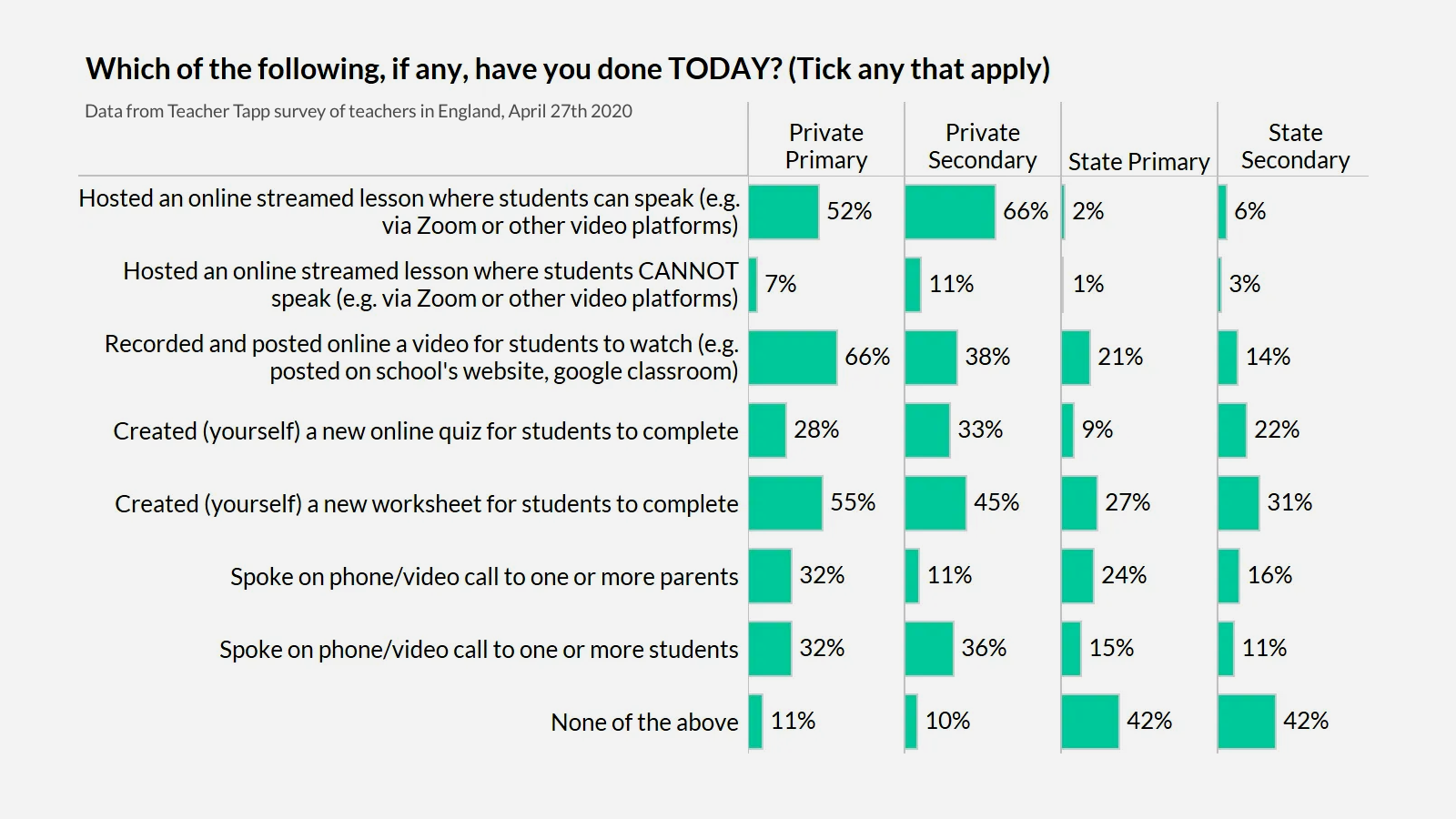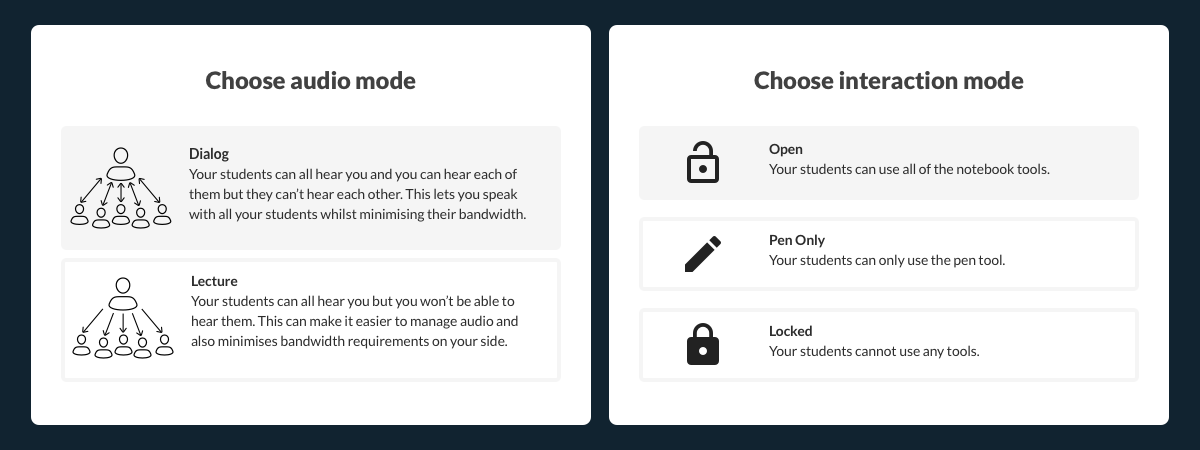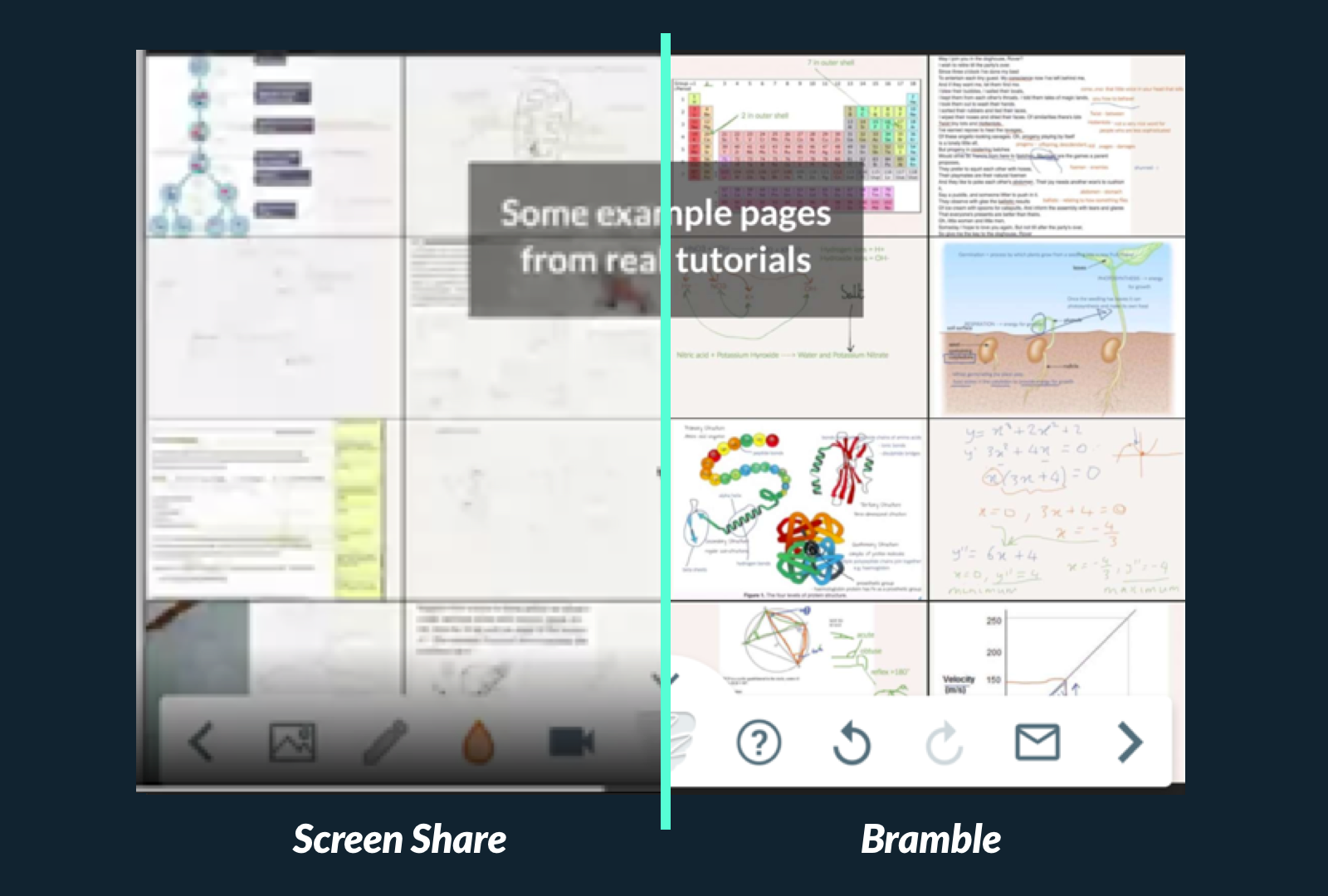Why we built Bramble Broadcast
by Will Chambers on 18th May, 2020

There are currently 8 million students in the UK not receiving live lessons from their teachers.
According to Teacher Tapp and The Sutton Trust, just 6% of state secondary school teachers are delivering live online lessons to their students. There is a dramatic difference between state schools and private schools in the provision of live online lessons. Privately educated students are 11 times more likely to be receiving live lessons right now.

Results from Teacher Tapp survey of teachers in England, April 27th 2020.
One of the many challenges we are hearing about from teachers is the lack of a suitable platform for the delivery of live lessons to a whole class. Since making Bramble freely available to aid responses to Coronavirus, we have seen 150,000 hours of live teaching and learning in 115 countries. Many of those hours have been delivered by charitable organisations, such as The Access Project, Team Up, Tutorfair Foundation, The Tutor Trust and the Coronavirus Tutoring Initiative.
Until recently, Bramble was only suitable for teaching students 1-to-1 or in small groups. With the release of Bramble Broadcast, you can now teach live lessons to up to 30 students at a time.
Clearly, there’s a lot more to the successful delivery of online learning than choosing the right software platform but we hope that making Bramble Broadcast freely available can help in some small part.
Designed for Teaching
In designing Broadcast, we accounted for a number of common concerns we were hearing from teachers about having to deliver live lessons using video conferencing software that was never built for teaching and learning. Chief among those concerns were:
- Accessibility for students with poor internet
- Low quality learning experience via screen sharing
- Operating in an uncontrolled environment
- Invasive webcam feeds in to homes
- Risk of home incidents being exposed to the class
We’ve addressed those concerns by introducing novel audio and interaction modes alongside our award-winning live classroom tools and our unique lesson recording and Smart Search technology.
We started by removing webcam and focussing the lesson on a shared whiteboard. This removes concern about student and teacher webcam feeds, as well as reducing bandwidth requirements. Our novel audio modes – Dialog and Lecture – further reduce bandwidth. Bramble Broadcast lessons requires 94% less bandwidth from students than a group video conference.
In Dialog mode, students can hear the teacher and the teacher can hear every student. The students cannot hear each other. This removes the risk of background incidents immediately being shared with the whole class. It can also help to enhance focus and concentration because there’s no crosstalk.

You can configure your Broadcast lessons however you like.
By focussing on a shared whiteboard rather than a shared screen, Broadcast offers a clearer and richer learning experience. Students experience everything in high resolution rather than via a laggy, pixellated screen share. Students can actively participate in the lesson by completing activities on the whiteboard. Our interaction modes allow teachers to tailor how much interactivity they make available to students in any given lesson.

Bramble's shared whiteboard is much clearer than a shared screen.
Our lesson recording and Smart Search technologies provide two further benefits. Firstly, they offer a critical safeguarding layer. With lessons recorded, any incidents can be addressed as required. Secondly, they provide students with access to a phenomenal learning and revision tool. With so much uncertainty around exams, it is invaluable for students to be building a rich revision library which they can return to and search anytime they need to review a concept.
Smart Search unlocks the full value of lesson recordings
It’s not clear how much longer traditional classroom teaching will continue to be disrupted. Whilst we can’t hope to fully recreate the school experience, we do hope that Bramble Broadcast will help some of those 8 million students receive at least some live lessons over the coming months. If you have any questions, we’d love to hear from you at schools@bramble.io.
Calculating the number of students receiving live lessons. In UK state schools, there are 3,330,000 secondary students and 4,730,000 primary students. There are 580,000 students in private schools. In state schools, 6% of secondary and 2% of primary teachers reported that they were delivering live lessons online. In private schools, 59% ((0.52 + 0.66)/2) of teachers are delivering live lessons. 0.06 x 3,330,000 + 0.02 x 4,730,000 + 0.59 x 580,000 = 636,600 students receiving live lessons. That leaves 8,000,000 students not receiving live lessons. This analysis assumes that teachers delivering live online lessons are clustered within the same schools rather than randomly distributed across schools.




